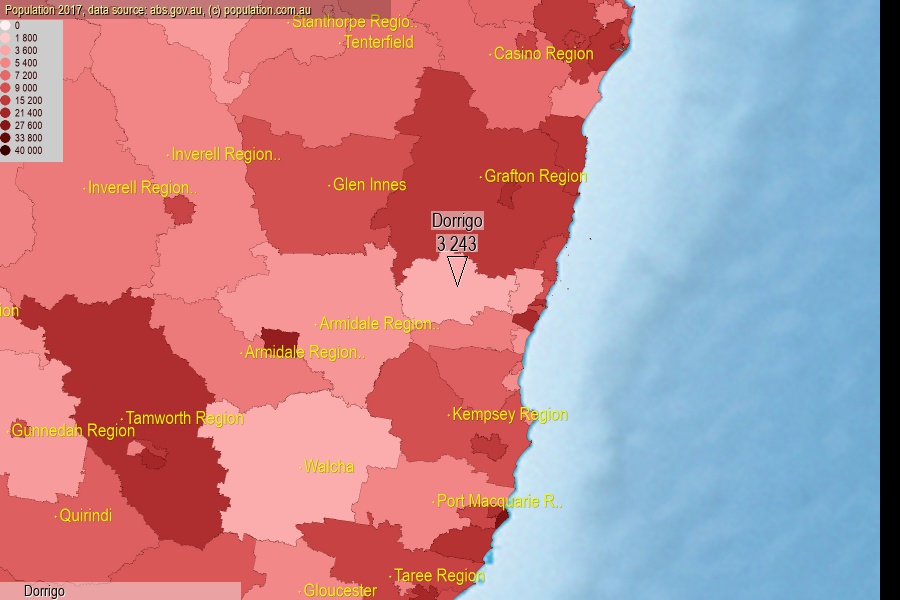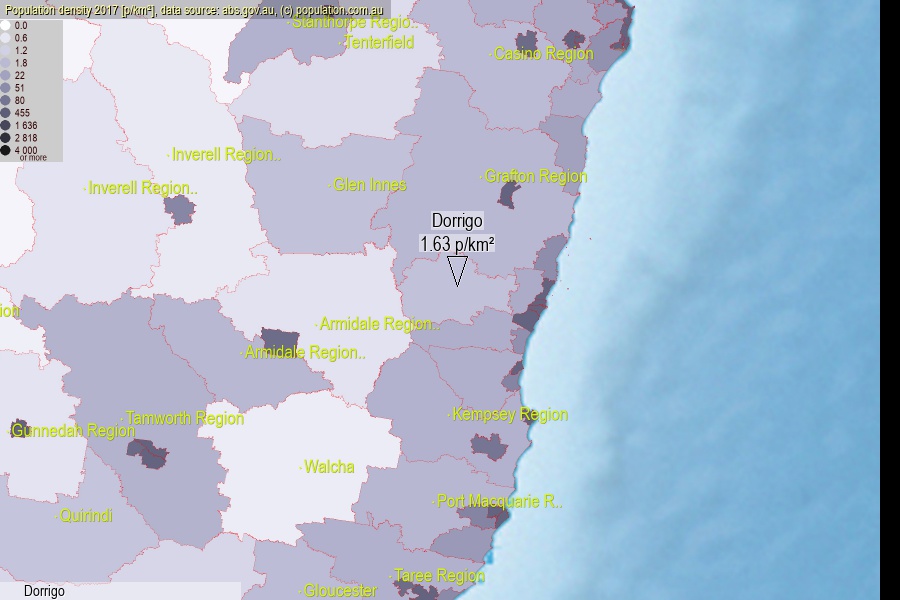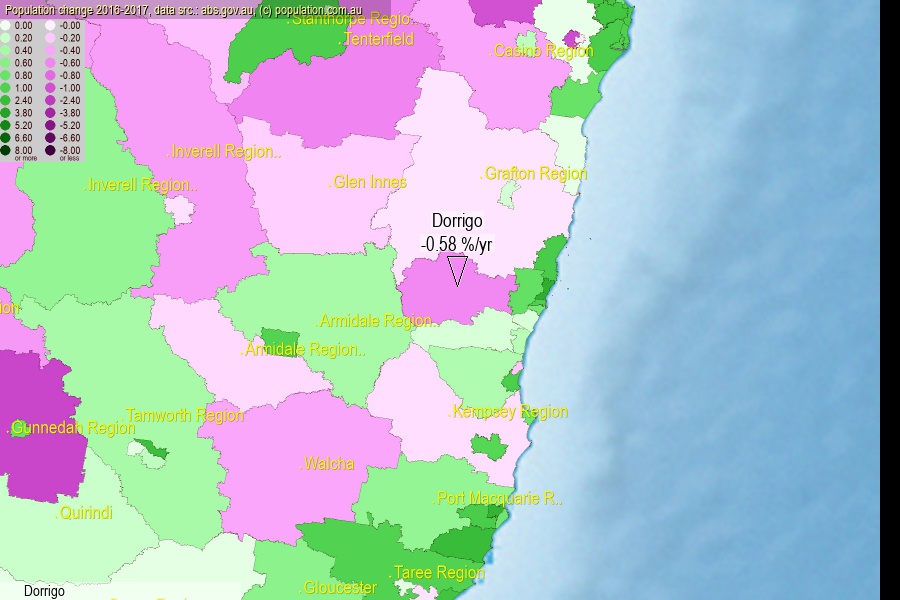 population.com.au
population.com.auLast official estimated population of Dorrigo (as Statistical Area Level 2) was 3 243 people (on 2017-06-30)[2]. This was 0.01% of total Australian population and 0.041% of NSW population. Area of Dorrigo is 1 987.70 km², in this year population density was 1.63 p/km² . If population growth rate would be same as in period 2016-2017 (-0.58%/yr), Dorrigo population in 2025 would be 3 095. [0]



Click to enlarge. Dorrigo is located in the center of the images.
Population [people], population density [p./km²] and population change [%/year] [2]
View borders » (new window) [4]
[1991-1992] -0.13 %/Yr.
[1992-1993] -0.43 %/Yr.
[1993-1994] -0.73 %/Yr.
[1994-1995] -0.46 %/Yr.
[1995-1996] -0.92 %/Yr.
[1996-1997] -1.98 %/Yr.
[1997-1998] -2.28 %/Yr.
[1998-1999] -2.28 %/Yr.
[1999-2000] -2.17 %/Yr.
[2000-2001] -2.39 %/Yr.
[2001-2002] -0.55 %/Yr.
[2002-2003] -1.04 %/Yr.
[2003-2004] -0.99 %/Yr.
[2004-2005] -0.83 %/Yr.
[2005-2006] -0.92 %/Yr.
[2006-2007] -0.93 %/Yr.
[2007-2008] +0.30 %/Yr.
[2008-2009] +1.03 %/Yr.
[2009-2010] +0.57 %/Yr.
[2010-2011] +0.24 %/Yr.
[2011-2012] -0.95 %/Yr.
[2012-2013] -0.90 %/Yr.
[2013-2014] -0.58 %/Yr.
[2014-2015] -0.27 %/Yr.
[2015-2016] -0.40 %/Yr.
[2016-2017] -0.58 %/Yr.
[0] Calculated with linear interpolation from officially estimated population
[1] Read more about SA2 and Australian Statistical Geography Standard (ASGS) on abs.gov.au
[2] Population data from Australian Bureau of Statistics (Population and density: 2017; change: 2016-2017)
[3] Digital Boundaries: Australian Statistical Geography Standard (ASGS) 2016.
[4] Border coordinates are simplifyed using Ramer-Douglas-Peucker algorithm.